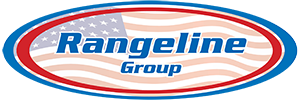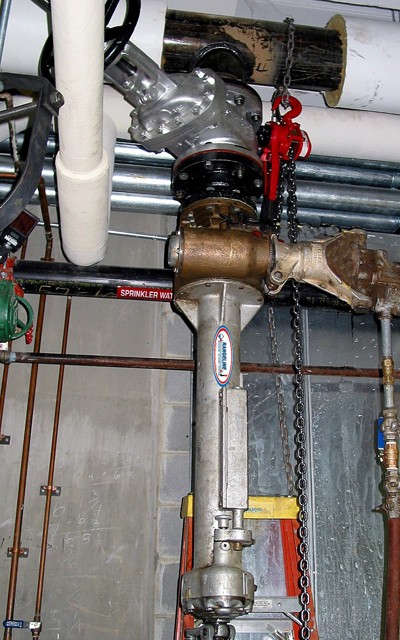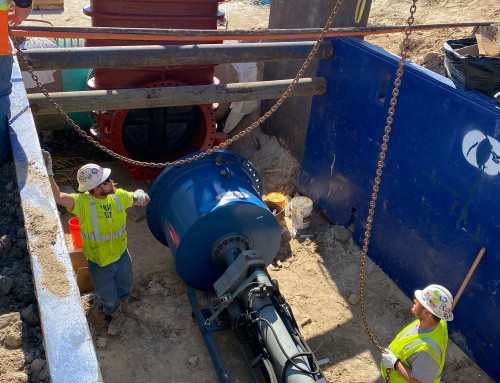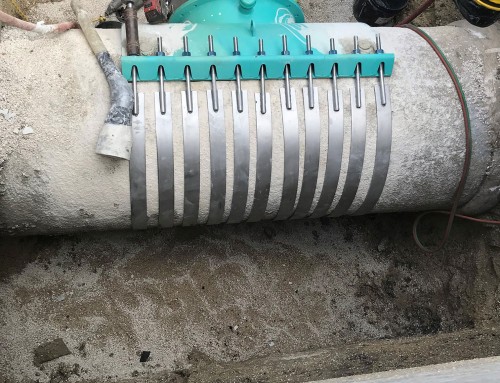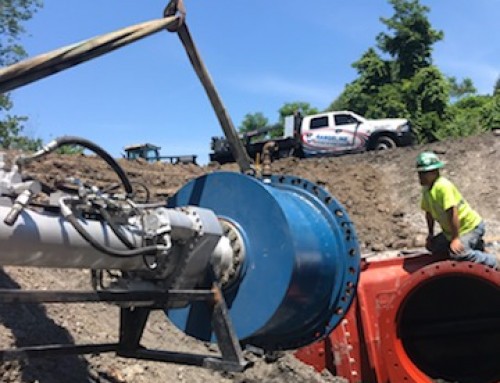Wet taps involve the process of connecting a new pipe to an existing pipe installation without having to interrupt the service at any point. The process is different depending upon a number of different factors. In most installations, a tapping sleeve is used to cover the existing pipe that is about to be tapped and have new pipe added on to it. The tapping valve will then be connected to the sleeve. Following the installation of the tapping valve, a tapping machine is connected that begins the tapping process.
The Tapping Machine
The tapping machine is the heart and soul of successful wet tap operations. With most tapping machines, they include a shaft that is able to extend, giving access to the tapping valve through the sleeve. A drill or shell cutter is used to cut through the side of the pipe, and larger taps are able to retain the portion of the pipe that is cut out, which is called the coupon. The coupon measurements are important in order to ensure future pipe fittings can be appropriately applied to the installation. Then, the tapping valve is closed, assuming that the effort has gone correctly and there are no issues with the wet tap, but keep in mind that issues may arise.
Often times there are numerous things that lead to a wet tap not going as successfully as it could. Some of the more common issues that lead to the wet tap not going successfully include;
Inexperienced personnel
As with any industry, having the right individuals there that know the business can help you to ensure that the job is done well. Because we are working with intricate details, it can be very easy to make a mistake when you do not have a lot of experience conducting wet tapping operations. Inexperienced personnel can quickly derail a wet tapping attempt, which is why we here at Rangeline have gone the extra mile in our employee training process to ensure that we are bringing experienced and proven individuals to each and every job.
Wrong Materials
Not all pipes are meant to be tapped. Sometimes, further problems can arise if the tapping goes wrong, such as additional leaks. It is important that you are able to identify whether or not a certain pipe is even able to be wet tapped before beginning the process, and if so, make sure to contemplate workarounds.
Incompatibility
You also need to make sure that all of your pipes, tools, and other materials are going to be compatible with one another. One of the biggest reasons why wet tapping jobs run into issues is due to using equipment and piping that are incompatible with one another. Make sure to inspect all equipment for compatibility before beginning the wet tapping process, as this is an issue that you do not want to deal with at a later time. This is especially true for larger diameter sizes. An easy way to ensure compatibility is to attempt to find materials from the same manufacturer. If there is a compatibility issue, we do offer custom fabricated fittings, which can help to fix a derailed wet tapping project that has been running into issues.
Standards
There are typically three different standards that are used when wet tapping. They are standards that were put together in order to ensure that certain performance and design standards are met in all operations when testing the tapping sleeves. In the Manufacturers Standardization Society Standards, pipes sized four inches through forty-eight inches are covered.
The MSS-Standard Practice III was originally created in 1992. The set of standards covers a wide range of topics, but mostly focuses on the design and performance for most tapping sleeves. The standard covers a wide range of dimensions, encompassing most jobs. The MSS-Standard includes and covers two dimensions. The first and most important is the inside diameter in the tapping sleeves branch. The total size has to be at least a quarter inch larger than the overall pipe size for easier access. This allows for shell clearance. The second consideration is the distance from the centerline to the flange on the tapping sleeve. The MSS-Standard relays maximum distances for each size, which cannot be surpassed for any reason. This ensures that the tapping machine will have enough travel to get deep into the pipe wall and successfully cut out a section of the pipe.
Other standards include the MSS-Standard Practice 60 and the MSS-Standard Practice 113. The Practice 60 Standard refers to the connecting joint that can be found between the tapping valve and the machine. This standard was created after the MSS-Standard Practice III in order to ensure that the two flanges are in alignment with one another, increasing the probability of a successful tap.
The MSS-Standard Practice 113 focuses on the joints that connect the tapping valve and tapping machine. This standard was created to limit interference issues with a number of different models of machines and valves.
There are many things that need to be taken into consideration in order to ensure that you are able to get the best possible results from your wet tap. You need to make sure that standards are followed to ensure that best chance of a successful outcome, and also have experience on your side. Here at Rangeline, we offer the highest quality of wet tapping services with our team of highly experienced and trained professionals, limiting issues and providing 24/7 emergency services to businesses in need.
